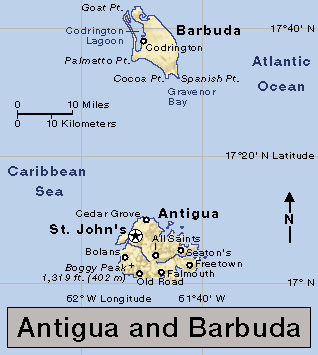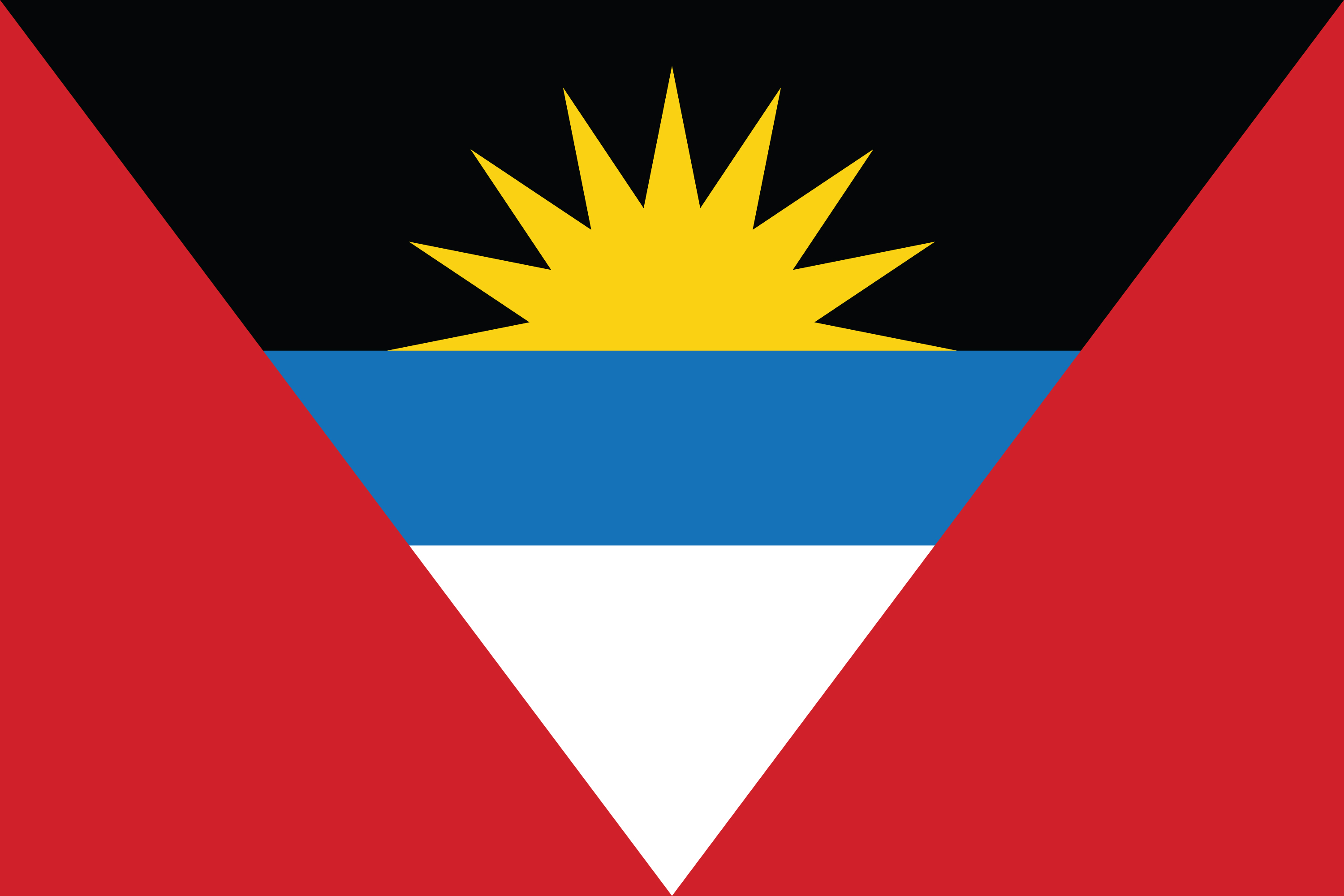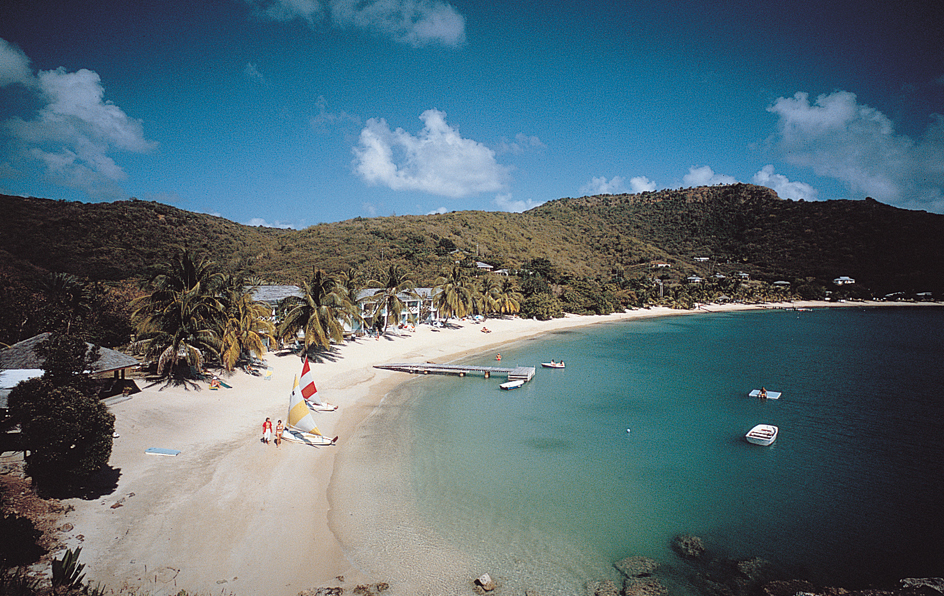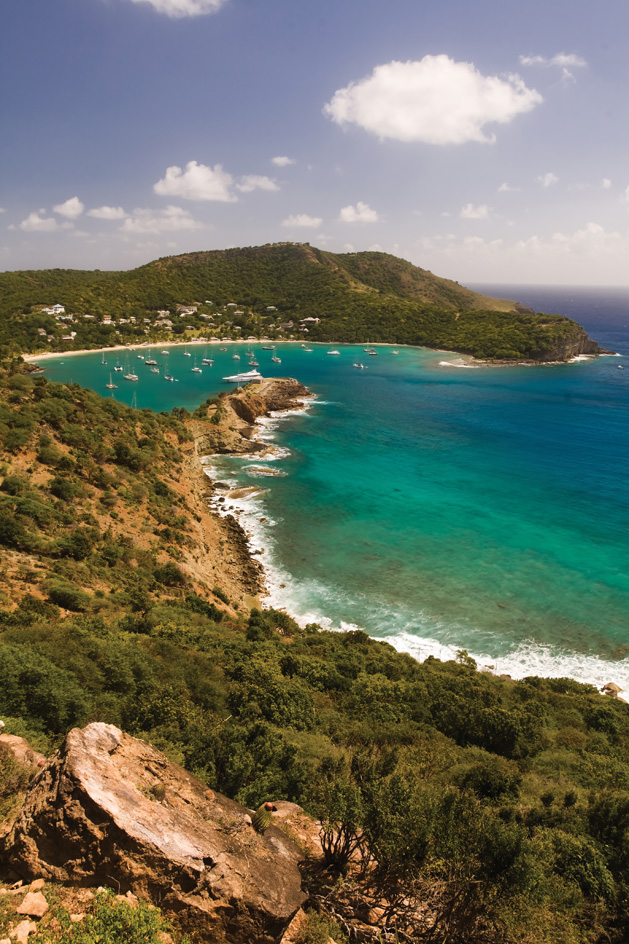Antigua and Barbuda << an TEE gah and bahr BYOO dah >> is an island country in the Caribbean Sea. It consists of three islands—Antigua, Barbuda, and Redonda. The islands lie about 430 miles (692 kilometers) north of Venezuela. 
Antigua and Barbuda has a total land area of 171 square miles (442 square kilometers) and a population of about 100,000. The island of Antigua covers 108 square miles (280 square kilometers); Barbuda, 62 square miles (161 square kilometers); and Redonda, only 1/2 square mile (1.3 square kilometers). About 98 percent of the people live on Antigua and 2 percent on Barbuda. Redonda is uninhabited. St. John’s (pop. 22,000), on the northwest coast of Antigua, is the country’s capital and largest city. The East Caribbean dollar is the country’s basic unit of currency.
Government.
Antigua and Barbuda is a constitutional monarchy and a member of the Commonwealth of Nations, an association of nations that includes the United Kingdom and many of its former possessions. A prime minister heads the government. The prime minister and a Cabinet conduct government operations. The country’s Parliament consists of a House of Representatives with mostly elected members and a Senate that is appointed. The head of the majority party of the House of Representatives serves as prime minister. The prime minister appoints the Cabinet members. 
People.
The vast majority of the people of Antigua and Barbuda are descendants of Africans. About half of the people live in St. John’s, and most of the rest live in rural areas. Most of the people live in one-story houses made of concrete blocks or wood. They wear clothing similar to that worn in the United States and other Western nations. Their main foods include beans, fish, lobsters, and sweet potatoes.
Almost all the people of Antigua and Barbuda speak English, the nation’s official language. Most of the people are Protestants. Anglicans make up the largest Protestant group. Antigua and Barbuda has well-developed primary and secondary educational systems.
Land and climate.
The islands of Antigua and Barbuda are mostly flat. They were formed from volcanoes that were worn down by wind and rain. The islands have beautiful beaches covered with white sand. Antigua’s coast has numerous bays and inlets. Redonda is rocky and has little plant life. The average temperature of the islands is 80 °F (27 °C). The islands receive about 45 inches (114 centimeters) of rain annually. However, long periods of drought strike the area from time to time. 
Economy.
Tourism ranks as the major economic activity of Antigua and Barbuda. The country’s beaches, resorts, and warm sunny climate attract tourists from the United Kingdom, the United States, and many other countries. The tourist industry employs many of Antigua and Barbuda’s people. Agriculture is also important to the country’s economy. Farmers raise cotton, fruit, livestock, and vegetables. The country’s crop production is often harmed by droughts. As a result, the government encourages the development of small industries to strengthen the economy. Many of the country’s people are employed in the construction sector.

History.
Carib people were the first inhabitants of Antigua and Barbuda. In 1493, Christopher Columbus became the first European to reach Antigua. British settlers established a colony on Antigua in 1632. The colony, which later included Barbuda and Redonda, was called Antigua. The British brought Africans to the islands and enslaved them to work on sugar cane plantations. The enslaved people were freed in 1834, the year after the United Kingdom abolished slavery throughout its empire. Most of the British people eventually left the colony, but the United Kingdom retained control of it.
In 1967, the colony of Antigua became part of the West Indies Associated States and gained control of its internal affairs. It became the independent nation of Antigua and Barbuda on Nov. 1, 1981.
In 1989, Hurricane Hugo struck Antigua and Barbuda. The hurricane caused two deaths and $80 million in property damage. Another powerful hurricane, Hurricane Luis, hit the islands in 1995, killing two people and causing $300 million in damage. In 2017, Hurricane Irma destroyed much of Barbuda, killing three people and forcing the temporary evacuation of the island’s population.
